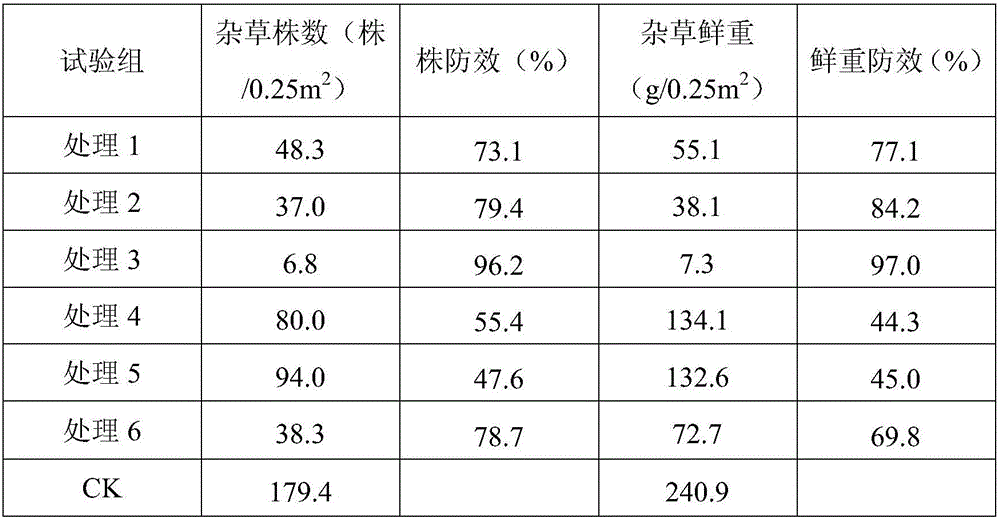Rape straw covering method for preventing and controlling rice field weeds
A rapeseed straw and rice field technology, applied in the agricultural field, can solve the problems of environmental pollution, waste of straw resources, etc., and achieve the effects of protecting the ecological environment, improving the quality of agricultural products, and solving difficult problems in processing
- Summary
- Abstract
- Description
- Claims
- Application Information
AI Technical Summary
Problems solved by technology
Method used
Image
Examples
Embodiment 1
[0040] Embodiment 1, rape stalks are dried and cut into 2-5 cm long stem segments. In water direct-seeding paddy fields, 4-7 days after rice sowing, evenly apply 600-900g / m at one time 2 Rape pods, straw or a mixture of both. When spreading, a small amount is gradually sprinkled in, and it is not advisable to sprinkle too much mulch in a concentrated manner, so as not to damage the rice seedlings. Normal management after spreading.
Embodiment 2
[0041] Embodiment 2, rape stalks are cut into 2-5 cm long stem segments after being dried in the sun. In dry direct-seeding paddy fields, 4-7 days after rice sowing, evenly spread 600-900g / m 2 Rape pods, straw or a mixture of both. Sprinkle in a small amount gradually, and it is not advisable to sprinkle in too much mulch, so as not to damage the rice seedlings. Normal management after spreading.
Embodiment 3
[0042] Embodiment 3, rape stalks are cut into 2-5 cm long stem segments after being dried in the sun. In transplanting paddy fields, 5-10 days after rice transplanting, evenly spread 600-900g / m 2Rape pods, straw or a mixture of both. Gradually spread a small amount between the rows of rice seedlings, and then spread them out in the field to evenly cover the soil surface to avoid overwhelming the rice seedlings. Normal management after spreading.
PUM
| Property | Measurement | Unit |
|---|---|---|
| Length | aaaaa | aaaaa |
| Length | aaaaa | aaaaa |
Abstract
Description
Claims
Application Information
 Login to View More
Login to View More - R&D
- Intellectual Property
- Life Sciences
- Materials
- Tech Scout
- Unparalleled Data Quality
- Higher Quality Content
- 60% Fewer Hallucinations
Browse by: Latest US Patents, China's latest patents, Technical Efficacy Thesaurus, Application Domain, Technology Topic, Popular Technical Reports.
© 2025 PatSnap. All rights reserved.Legal|Privacy policy|Modern Slavery Act Transparency Statement|Sitemap|About US| Contact US: help@patsnap.com



